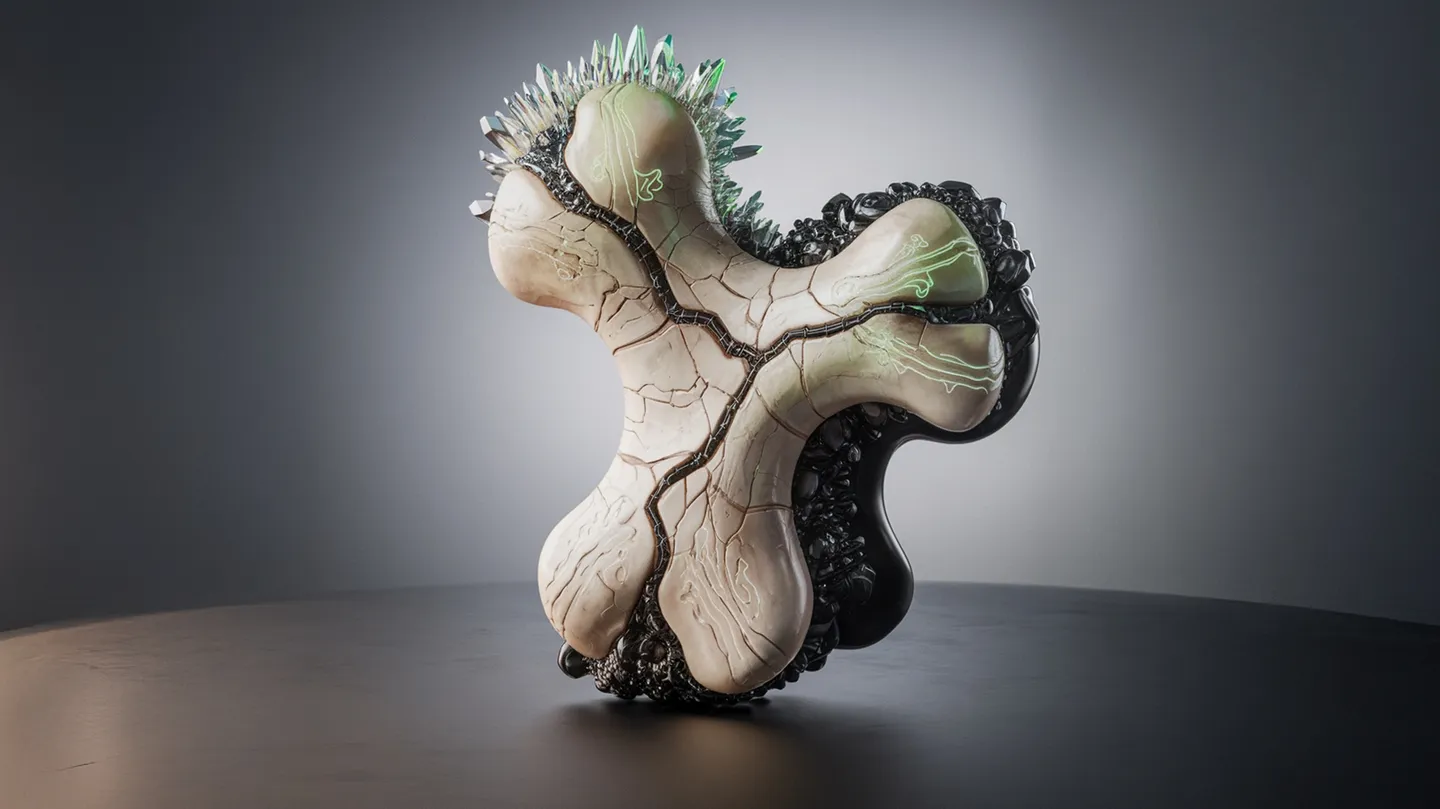
OOPART
About artwork
Provenance
Tech info
About
This experimental learning model tasks artificial intelligence with envisioning new post-human organs, inspired by a dystopian world reshaped by the consequences of climate change and influenced by the conceptual framework of Out-of-Place Artifacts (OOP Artifacts). The model engages AI as a creative and speculative agent, imagining bio-engineered anatomical structures that might emerge as adaptive responses to extreme environmental conditions or as artifacts of speculative futures. Drawing on bioart principles and the aesthetics of survival, the imagined organs transcend traditional biological functions, blending speculative fiction with ecological foresight. Each design embodies the tension between necessity and invention, reflecting the fragility of life and the transformative potential of biotechnological evolution in a changing planet. The outcomes of this exploration are not just visual artifacts; they are provocations meant to challenge perceptions of the body and nature, questioning how humanity might redefine itself under the pressures of a radically altered world. These "post-human organs" serve as both a mirror and a warning, offering glimpses into a speculative biotechnological future shaped by human ingenuity and environmental collapse.


























